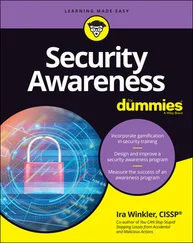Smart Grid is defined as system of systems, implying also a network of information networks. Although some characteristics are similar to IT systems, AMI systems have characteristics that differ from traditional information systems. Many of these differences stem from the fact that AMI systems are integrated into the physical power grid. In some cases, adversely impacting an AMI system can pose significant risk to the health and safety of human lives and serious damage to the environment, as well as serious financial issues such as production losses.
Unlike automatic meter reading, AMI enables two‐way communications with the meter. Smart meters enable two‐way communication between the meter and the central system. A smart meter is an electronic device that records consumption of electric energy, natural gas, or water in intervals of an hour or less and communicates that information at least daily back to the utility for monitoring and billing purposes. Each meter must be able to reliably and securely communicate the information collected to some central location.
In addition to communication with the headend network, smart meters may need to be part of a home area network, which can include a customer display and a hub to interface one or more meters with the headend. Technologies for this network vary from country to country. Many security concerns center on the inherent hacking weakness of wireless technology, combined with the remotely controllable software incorporated into smart meters.
Security of the devices and information and other issues associated with meter data transmission from the customer meters to the AMI host system need to be addressed to ensure that only authorized devices provide and receive meter data.
1.8 Standards, Guidelines, and Recommendations
In the development of Smart Grid, requirements may be developed based on standards, guidelines, and recommendations defined as follows:
Standards are documents, established by consensus, that provide rules, guidelines, or characteristics for products, activities, or their results; once adopted by an industry, they can be enforced, and an organization may comply.
Guidelines are a set of recommended practices produced by a recognized authoritative source representing subject matter experts and community consensus or internally by an organization; the guidelines may be adopted, but there are no compliance requirements.
Recommendations are a set of advices and good practices.
1.8.1 Overview of Various Standards
Standards are being talked about all over the world, and it is a confusing world full of new acronyms, players, consultants, and companies. While overwhelming at times and competitive at others, standards organizations are all working toward the same goal. The goal is for vendor interoperability and collaboration without the installation of custom systems. Standards help in maximizing safety, compatibility, and quality of processes and products.
Technical standards are the result of a standardization process, and they can be classified as:
De facto standards that are followed by informal convention or dominant usage.
De jure standards that are part of legally binding contracts, laws, or regulations.
Voluntary standards that are published and available for people to consider for use.
A technical standard is a formal document of specifications that define the capabilities of a product for a particular use including the function and performance of a device or system. It is usually a document that establishes uniform engineering or technical criteria, methods, processes, and practices. A standard or a group of standards can be used to support a function.
Standardization is greatly increased when companies release new products to market. Compatibility is important for products to be successful; this allows consumers to use their new items along with what they already own.
Also, standards may include safety issues following these guidelines [ISO/IEC 51].
The existence of a published standard does not necessarily imply that it is useful or correct. Just because an item is stamped with a standard number does not, by itself, indicate that the item is fit for any particular use. The people who use the item or service (engineers, trade unions, etc.) or specify it (building codes, government, industry, etc.) have the responsibility to consider the available standards, specify the correct one, enforce compliance, and use the item correctly. Therefore, key attributes need to be considered.
1.8.2 Key Standard Attributes and Conformance
Key standard attributes should include:
Enable interoperability – Standards are critical to enabling interoperable systems and components; mature, robust standards are the foundation of mass markets for the millions of components that will have a role in the future Smart Grid.
Enable innovation – Standards enable innovation where thousands of companies may construct individual components.
Enable consistency – Standards also enable consistency in system management and maintenance over the life cycles of components.
The electricity industry is facing multiple competing standards, guidelines, and recommendations. The Smart Grid is no exception.
1.8.3 Smart Grid Standards
Collaboration on standards for the Smart Grid is a must, and the power industry needs to embrace the work the standards organizations are doing. Participation is encouraged; but more important are the conversations that occur at appropriate levels of abstraction. It is also important for all standards organizations to work at the level that suits the application. For example, when specifying a protocol, the bits and bytes are important; however, when specifying a business integration framework, the bits and bytes are less important than workflow, which takes precedence. This is a delicate balance but one that the industry will need to develop and embrace [Vos 2009].
In the Smart Grid, the evidence of the essential role of standards is growing. A Congressional Research Service report, for example, cited the ongoing deployment of smart meters as an area in need of widely accepted standards. The US investment in smart meters predicted to be at least $40 billion for a million new smart meters over a period of five years [Kaplan 2009], [ON World 2009], [WH 2016].
The principle of using open standards is highly encouraged to support interoperability and therefore help popularize new technologies [Microsoft 2002]. An open standard is a standard that is publicly available and has various rights to use associated with it. It may also include an explanation of how it was designed and why (e.g. open process). There is no single definition, and interpretations vary with usage [Open Standard]. Among known standards organizations, only the IETF and ITU‐T explicitly refer to their standards as open standards that allow reasonable and nondiscriminatory patent licensing fee requirements. However, those in the open‐source software community think that an open standard is only open if it can be freely adopted, implemented, and extended.
1.8.3.1 Key Players in Smart Grid Standards Development
The major key players involved in the development of standards supporting the Smart Grid include:
NIST – Private agency (former federal technology agency).
ISA – International organization of engineers in control of industrial processes.
SGIP (Smart Grid Interoperability Panel) – Different areas.
UCA International User Group – Suppliers of electric/gas/water utility systems.
GridWise Alliance – Transform the US electric grid to achieve a sustainable energy future.
EPRI/EEI – Research and innovation in many areas.
Читать дальше












